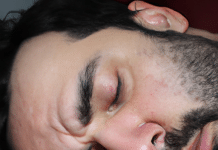Have you ever wondered how your body knows when it’s time to sleep, wake up, or even eat? It’s all thanks to the remarkable mechanism known as your body’s internal clock. This innate timekeeper governs our daily rhythms, ensuring that our bodily functions align with the external world. From sleep-wake cycles to hormone production, our internal clock plays a pivotal role in maintaining our overall health and well-being. So, let’s take a closer look at the fascinating workings of this intricate system and gain a deeper understanding of how our bodies stay in sync with the world around us.
Review contents
Overview
The concept of the body’s internal clock refers to the intricate system within our bodies that regulates various physiological processes in a rhythmic pattern. Our internal clock, also known as the circadian rhythm, plays a vital role in maintaining our overall health and well-being. This natural rhythm is influenced by a multitude of factors, including light and darkness, hormones and neurotransmitters, external influences, and even our age. Understanding the concept and importance of the body’s internal clock is crucial for maintaining a healthy sleep-wake cycle and overall physiological harmony.
Circadian Rhythm
The circadian rhythm is a fundamental aspect of the body’s internal clock. It is characterized by a 24-hour cycle that influences various biological processes, including our sleep patterns, hormone production, and body temperature. This rhythm is driven by our body’s master clock, the suprachiasmatic nucleus (SCN), which is located in a small region of the brain called the hypothalamus. It orchestrates the timing and synchronization of our internal processes to align with the external environment, helping us function optimally.
Several factors influence the circadian rhythm, including external cues such as light and darkness, social interaction, meal times, and physical activity. These cues help regulate our internal clock, allowing it to adjust and adapt to our daily routines. When our circadian rhythm is disrupted, it can have significant implications on our health and well-being, impacting our sleep quality, mood, cognitive function, and overall physiological balance.
The Suprachiasmatic Nucleus (SCN)
The suprachiasmatic nucleus (SCN) is a small group of cells located in the hypothalamus, just above the optic nerve crossing. It serves as the main coordinator of the body’s internal clock, receiving external cues and synchronizing our biological processes with the external world. The SCN contains specialized cells that respond to light and darkness, helping to regulate our sleep-wake cycle and other physiological functions.
Functionally, the SCN acts as a central pacemaker, generating a 24-hour rhythm that orchestrates our body’s various internal processes. It receives information about light and darkness from the eyes and relays this information to different regions of the brain, initiating hormonal signals and neurotransmitter release that promote wakefulness or sleep, depending on the time of day. The SCN’s precise timing and synchronization are crucial for maintaining a healthy circadian rhythm and overall physiological balance.
Light and Dark Cycles
Light and darkness play a significant role in regulating the body’s internal clock. The presence of light signals our body to be awake and alert, while darkness signals the need for rest and sleep. The mechanisms through which light and darkness influence our circadian rhythm involve the reception of light by specialized cells called photoreceptors in the retina.
When exposed to bright light, these photoreceptors relay information to the SCN, signaling that it is daytime and promoting wakefulness. Conversely, in the absence of light or during periods of darkness, the photoreceptors send signals to the SCN, promoting the release of melatonin, a hormone that helps regulate sleep. This intricate interaction between light and darkness helps align our internal clock with the external environment, allowing for optimal sleep-wake patterns.
Hormones and Neurotransmitters
Melatonin, often referred to as the “sleep hormone,” plays a crucial role in regulating the body’s internal clock. Produced by the pineal gland, melatonin levels increase in the evening, promoting feelings of sleepiness and initiating the body’s transition into sleep mode. Conversely, melatonin levels decrease in the morning, signaling wakefulness.
In addition to melatonin, various other hormones and neurotransmitters are involved in the body’s internal clock. Adenosine, a neurotransmitter that accumulates in the brain during wakefulness, promotes sleepiness as levels increase. On the other hand, norepinephrine and dopamine, neurotransmitters associated with wakefulness and alertness, are released in higher amounts during waking hours.
The intricate interplay between these hormones and neurotransmitters, along with the regulation of their release by the SCN, helps maintain the delicate balance of our internal clock. Disruptions in these hormonal and neurotransmitter patterns can have significant implications for our sleep quality and overall well-being.
External Influences on Internal Clock
External influences can have a profound impact on our body’s internal clock, sometimes causing disruptions or imbalances. Jet lag, for example, is a common condition experienced when traveling across multiple time zones. The sudden time change can disrupt our circadian rhythm, leading to symptoms such as fatigue, insomnia, digestive issues, and mood disturbances. Gradually adjusting to the new time zone and utilizing strategies such as exposure to natural light and regulating meal times can help mitigate the effects of jet lag.
Shift work is another external influence that can significantly impact the body’s internal clock. Working during nighttime hours or rotating shifts can disrupt the natural circadian rhythm, leading to sleep disturbances, fatigue, and long-term health consequences. Employing techniques such as strategic exposure to bright light, maintaining a consistent sleep-wake schedule, and practicing proper sleep hygiene can help alleviate the challenges associated with shift work.
Age and Internal Clock
As we age, significant changes occur in our body’s internal clock. Older adults often experience alterations in their sleep patterns, with a tendency to have difficulty falling asleep, staying asleep, or waking up earlier than desired. These changes are attributed to a natural shift in the circadian rhythm, which involves a decrease in the production of certain hormones and neurotransmitters involved in sleep regulation.
Furthermore, the aging process affects the SCN, leading to a gradual decline in its functional output. This decline can result in reduced synchronization of physiological processes and alterations in sleep-wake patterns. It is essential for older adults to be mindful of these changes and implement strategies to promote healthy sleep habits, such as maintaining a consistent sleep schedule, creating a comfortable sleep environment, and practicing relaxation techniques before bed.
Disruptions to the Internal Clock
Disruptions to the body’s internal clock can have significant consequences on our health and well-being. Individuals with circadian rhythm disorders often experience difficulty falling asleep or staying asleep, leading to chronic sleep deprivation. This can result in a range of detrimental effects, including daytime sleepiness, impaired cognitive function, mood disturbances, and increased risk of accidents and injuries.
Furthermore, disruptions to the internal clock have been linked to various health conditions. Shift work has been associated with an increased risk of cardiovascular disease, metabolic disorders, and certain cancers. Chronic sleep deprivation, often seen in individuals with circadian rhythm disorders, has been linked to obesity, diabetes, depression, and compromised immune function. It is crucial to recognize and address disruptions to our internal clock to mitigate these potential health consequences.
Chronotherapy
Chronotherapy refers to the application of specific timing techniques to treat circadian rhythm disorders. It involves manipulating the timing of exposure to light, darkness, and other external cues to recalibrate the body’s internal clock. Chronotherapy can be used to shift sleep-wake patterns forward or backward, depending on the desired outcome.
For example, individuals with delayed sleep phase disorder, characterized by a tendency to stay awake and sleep later than desired, can benefit from a carefully designed chronotherapy program. This program gradually adjusts the timing of exposure to light and darkness, helping to reset the internal clock and promote an earlier sleep schedule.
While chronotherapy can be an effective treatment option for circadian rhythm disorders, it also has limitations. It requires careful monitoring and guidance from healthcare professionals, as abrupt changes in sleep-wake patterns can lead to further imbalances in the internal clock. Additionally, implementing chronotherapy may be challenging for individuals who work irregular hours or have other lifestyle constraints.
Maintaining a Healthy Internal Clock
Maintaining a healthy internal clock is crucial for overall well-being and optimal functioning. Several strategies can help establish and reinforce a consistent sleep-wake schedule, promoting synchronization with the body’s internal clock.
Establishing a consistent sleep-wake schedule involves going to bed and waking up at the same time every day, even on weekends. This regularity helps train the body to adhere to a specific sleep pattern, enhancing the efficiency of the internal clock. Creating a conducive sleep environment is also essential, ensuring that the bedroom is dark, quiet, and cool. Removing electronic devices and implementing relaxation techniques before bed can further enhance the quality of sleep and promote a healthy internal clock.
In conclusion, the body’s internal clock, governed by the circadian rhythm, is a complex system that regulates various physiological processes in a rhythmic pattern. Understanding the concept and importance of this internal clock is essential for maintaining a healthy sleep-wake cycle and overall physiological harmony. By recognizing and respecting the factors that influence our internal clock, such as light and darkness, hormones and neurotransmitters, external influences, and our age, we can optimize our well-being and lead healthier, more balanced lives.





























